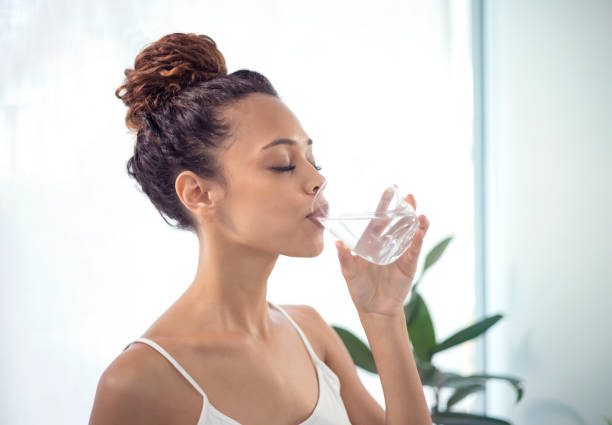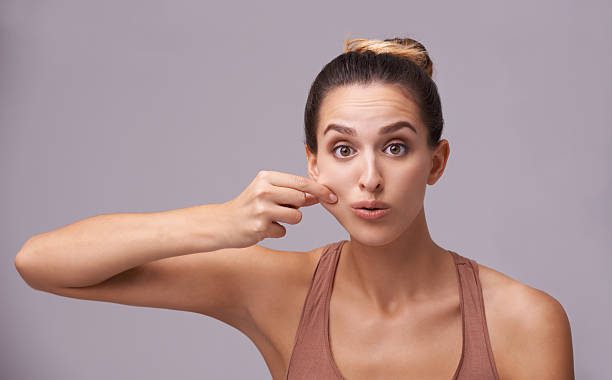The TikTok “skin pinch test” is all over the internet, promising a quick and easy way to check if your body is well-hydrated.
According to the trend, pinching the skin on the back of your hand can supposedly reveal whether you’re drinking enough water—if your skin bounces back quickly, you’re hydrated; if it takes a moment to return, you may be dehydrated.
But how accurate is this method? Can a simple pinch of skin really tell you all you need to know about your hydration levels?
In this article, we’ll dive into the science behind the skin pinch test, discuss what it can (and can’t) reveal, and share some more reliable ways to gauge your hydration.
Table of Contents
The Science Behind the Skin Pinch Test
The skin pinch test isn’t new—it’s actually based on a concept called skin turgor, a medical term that refers to skin’s elasticity and how well it returns to its normal position after being pinched.

Skin turgor is often used in clinical settings to assess dehydration, especially in children and the elderly, as these groups can be more susceptible to dehydration.
When you’re
well-hydrated, your skin should be plump and elastic, making it bounce back quickly after being pinched.
On the other hand, dehydration can lead to a loss of elasticity, causing your skin to return more slowly. This change is often due to a decrease in water in your skin cells, which can affect how “stretchy” your skin feels.
Why the TikTok Skin Pinch Test Isn’t Foolproof
While the skin pinch test might sound simple and effective, it’s not a definitive measure of hydration for everyone. Here’s why:
- Individual Differences: Skin elasticity varies from person to person, depending on age, skin type, and overall health. Younger people generally have more elastic skin, while older individuals might naturally experience slower skin recovery. This means that even if an older adult is well-hydrated, their skin might take longer to bounce back, making the test unreliable.
- Factors Beyond Hydration: Factors like weather, skincare routines, and even diet can influence skin elasticity. For instance, dry or cold climates can reduce skin moisture, making it feel less elastic even if you’re drinking plenty of water.
- Misleading Results for Chronic Conditions: Certain health conditions, like diabetes or autoimmune diseases, can also affect skin elasticity. This means the skin pinch test may not provide accurate results for people with these conditions.
- Temporary Changes in Hydration: Hydration is influenced by many factors, including physical activity, caffeine intake, and even stress. These can cause temporary fluctuations in hydration that might not be captured by a single pinch test.
How to Know If You’re Really Hydrated
While the skin pinch test can provide a quick snapshot, it’s best used alongside other indicators of hydration. Here are some more reliable ways to monitor your hydration:
- Urine Color: One of the easiest ways to check your hydration is by looking at your urine color. A pale, light yellow color generally indicates good hydration, while darker yellow or amber shades may mean you need to drink more water.
However, certain vitamins and foods can also influence urine color, so consider this method alongside other signs.
- Thirst: Thirst is your body’s natural response to dehydration, so if you feel thirsty, it’s a clear sign to drink more water. While it sounds obvious, many people ignore thirst signals, especially during busy days. Listen to your body and stay hydrated regularly.
- Energy Levels and Focus: Dehydration can affect your brain’s performance, leading to fatigue, headaches, and difficulty concentrating. If you find yourself feeling sluggish or unable to focus, it could be a sign that you need to rehydrate.
- Dry Skin and Mouth: Skin dryness, flaky lips, or a dry mouth can all indicate dehydration, as water is essential for keeping your tissues moist. However, keep in mind that external factors, like humidity levels and skincare routines, can also impact these signs.
- Tracking Your Water Intake: Many people use apps or set reminders to track their daily water intake. This can be especially helpful for those who struggle to drink enough water each day. Most people are recommended to drink about 8 glasses (or 2 liters) of water a day, though needs vary based on activity levels and climate.

Tips to Stay Hydrated
If you’re aiming to improve your hydration, here are a few practical tips:
- Carry a Water Bottle: Keeping a reusable water bottle with you can make it easier to remember to drink throughout the day.
- Add Flavor: If plain water doesn’t appeal to you, try adding a slice of lemon, cucumber, or a splash of fruit juice for flavor. Herbal teas can also count toward your daily hydration.
- Eat Hydrating Foods: Fruits and vegetables like watermelon, cucumber, and oranges have high water content and contribute to your daily fluid intake.
- Set Reminders: Sometimes, we simply forget to drink water. Setting hourly reminders on your phone or using a hydration app can keep you on track.
Conclusion
The TikTok skin pinch test might provide a fun way to gauge hydration, but it’s not the most reliable method.
While it can be a helpful indicator, relying solely on it may lead to inaccurate conclusions about your hydration status.
To truly understand if you’re hydrated, consider a combination of factors, like urine color, thirst, and energy levels.
Staying hydrated is essential for your overall well-being, impacting everything from skin health to concentration and energy.
By making hydration a daily habit, you’re setting yourself up for better health and improved quality of life—no skin pinch required.
Photo | pexels











